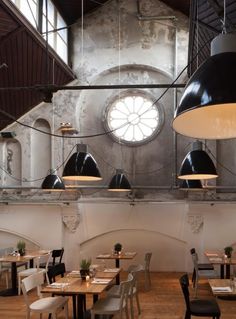 More tables means more covers, which means more revenue. It seems like a no-brainer, but hindsight is 20-20 when many owners take a closer look at their restaurants and realize they can fit in another table or two. Actions as small as moving around some furniture, or even just cleaning up the place, could lead to serious gains over time. Before moving any further, lets look at an example that could encompass a good number of eateries out there. I recently dined at a notable high-volume ethnic restaurant along Westwood Boulevard. The place had a 30-minute wait at 8:30 p.m. on a weekday, clearly doing well from a demand perspective. I couldn't help but notice, however, that a corner booth was being used as a storage shelf for extra tablecloths. The eyesore factor was a non-issue compared to the ridiculous amounts of money that this place was leaving on the table [pun slightly intended]. Factoring in a few assumptions, here's the calculation to show how a wasted table like this bleeds profit: 1 table x 4 covers/table x 17 turnovers/day x 7 days/week x $40 average check = nearly $20,000 a week. This amounts to more than $1 million in sales a year! As you can see, there's no room for error when it comes to maximizing your floor space. So take a look at your setup and assess whether you can make any improvements. Work tables into the mix Restaurants across the board are shifting away from fixed booths and toward tables. The primary reason: flexibility. I recently called a restaurant to make a reservation for eight, but was turned down because the place was 100% booths, and could only accommodate six at a time. The lost revenue here is mind-blowing. Not only is this place losing out on group reservations, which tend to bring in much higher average checks, but they've got serious capacity problems. Imagine two people walking in and getting the last available booth, set for six, and then a party of six showing up moments later, only to head back out the door due to the wait. To get the best of both worlds, many restaurants are going with booth 'hybrids,' where a continuous booth runs across an entire wall and tables are lined up with chairs on the other side. This allows at least half the party to enjoy the booth experience while still allowing you to optimize covers. Assess new furniture options Furniture is a huge expense, but in some cases could be well worth it. Some restaurants have large, lavish chairs that don't push in under the tables. While the space certainly entices guests, these chairs take up room that additional tables--and covers--could occupy. The sacrifice is fine at fine dining restaurants that place a much heavier focus on ambiance, but may not be the case for a higher-volume establishment where customers don't place the same value on large chairs. Since we've spent so much time on tables, also take note of whether your tables are the right size. I've seen numerous 2-top tables that are simply too long, coming at the cost of an entire row at some places. On the other end, nobody wants a table that's too small. If you've got big, decorative plates and your servers have trouble setting down an entree and a side dish next to one another, it could mean that guest's last visit. Of course all of these recommendations rely on the assumption that your restaurant is at capacity in the first place. If not, then best to look at refining your product, building your brand, and/or marketing your message to drive traffic. When assessing your floor space, be sure to follow all fire and safety regulations. But if you see that you've consistently got a line out the door, it's time to take a critical look at your floor and ask how you can make a small change for a million bucks.
0 Comments
Leave a Reply. |
AuthorBenjamin Brown is a seasoned restaurant writer and hospitality consultant, serving up SoCal's hottest food news and reviews. Categories
All
Archives
June 2021
@Foodie_Biz |
|
Home
About
Blog
Consulting Tips
Contact
Legal
|
Foodie Biz provides restaurant news and reviews for the food community, as well as consulting advice for restaurant owners and other hospitality professionals.
Contact Foodie Biz for media opportunities and freelance consulting projects. Contact Foodie Biz |



